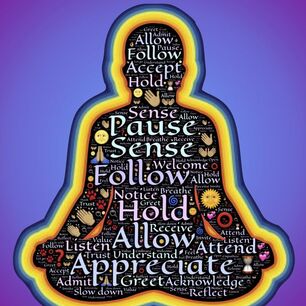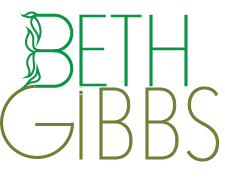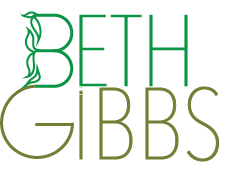ENLIGHTEN UP! a blogSelf-awareness stories: lighting our way to clarity, contentment and resilience in a complicated world.
|
 Photo credit: John Hain Photo credit: John Hain This post originally appeared on yogatherapy.health, published by the International Association of Yoga Therapists. Used with permission. Increasing self-awareness—and healing—through panchamaya kosha By Beth Gibbs Working with the panchamaya kosha model, also referred to as the five layers of self-awareness, can be an effective way of beginning a healing journey. We may describe and often work with the koshas separately, but ultimately they are one interrelated system that make up the whole human being. Yoga therapists who use this model with clients tend to start with the physical body because that’s the level most people connect with easily. However, working with one kosha means that we are affecting all of them simultaneously. Following are two ways you might work with this model. The first is to recognize and “feel” the reality of these levels within yourself, using them to understand how you function in the world. Here’s a personal example. I start out most days with a to-do list. My goal is always to check off every item before evening. One day I had five items on my list. After items one, two, and three were checked off, the layer of my body sent a message—through a rumbling stomach and a loss of energy—that lunchtime had come and gone. I listened to the message and drove to a nearby restaurant for lunch. While I ate, the layer of my mind was busy planning the most efficient way to complete the last two items on my list. When I finished eating, my mind said, “Get up and go!” But my body and energy replied, “No! Rest and digest!” So I sat and waited for resolution. After a few minutes of stillness, my mind accepted the body’s message, and I headed home. The second way to work with the panchamaya model is to view the koshas as guideposts on the path leading to freedom from maya, the relative reality of our material world. Yoga therapist Joseph LePage, C-IAYT, explains it this way: The koshas are an integrated framework for developing awareness of all aspects of our lives. As we become conscious, a process of spiritual transformation results, opening us to ever deeper realms of meaning, openness and freedom. The koshas, or layers of being, are: Physical (annamaya kosha)—our size, shape, gender identification, race and ethnicity, anatomy, and physiology, and even extending to our homes and the planet we all share. Energetic (pranamaya kosha)—oxygen nourishes and sustains life. Energy, or prana, is the animating force that enables us to think, create, move, love, work, and navigate all that life brings. Mental (manomaya kosha)—our thoughts, beliefs, and emotions. This kosha relates to how we think, what we think about, what we believe, and how we experience and express our emotions. Intuitive wisdom (vijnanamaya kosha)—the witnessing awareness, the ability to observe ourselves and our lives with compassion and without judgment to consciously make more informed choices. Bliss (anandamaya kosha)—our connection to something larger than ourselves. This can be spiritual or religious, or a deep connection to a healthy passion or to the natural world. As we internalize and embody the koshas in our lives, we gain the clarity, contentment, and resilience needed to help us make needed changes, remain unchanged with full awareness of the consequences, or find acceptance and peace of mind if change is not possible. Such work is one path to wisdom and finding the “ever deeper realms of meaning, openness and freedom” mentioned above and referred to in the following lines from Eknath Easwaran’s translation of the Taittiriya Upanishad*: The Self in man and in the sun are one. Those who understand this see through the world And go beyond the various sheaths of being To realize the unity of life. Beth Gibbs, MA, C-IAYT, is an author, speaker, teacher, and trainer. Her books, blog posts, and workshops focus on the benefits of yoga, meditation, and self-awareness. *The Upanishads were written in India during a time when people began to shift the focus of religious life from external rites and sacrifices to internal spiritual quests. Each of these 13 texts shares stories, ideas, instructions, and insights into the meaning of consciousness and self-awareness that are as relevant today as they were 3,000 years ago. The original post can be found here: https://yogatherapy.health/2021/01/22/increasing-self-awareness-and-healing-through-panchamaya-kosha/
0 Comments
Your comment will be posted after it is approved.
Leave a Reply. |
Archives
July 2024
AuthorBETH GIBBS started her yoga practice in 1968, four months after her son was born and she’s been practicing ever since. She currently teaches all levels therapeutic yoga classes for adults, and specialty classes for seniors in the Hartford, Connecticut area. Beth is a certified yoga therapist through the International Association of Yoga Therapists and is guest faculty at the Kripalu School of Integrative Yoga Therapy. She writes for the blogs, Yoga for Healthy Aging, and Accessible Yoga. Her master’s degree from Lesley University in Cambridge, MA is in Yoga Therapy and Mind/Body Health. Categories |
|
|
Enlighten Up! a Blog
|
Copyright © 2023 Beth Gibbs

 RSS Feed
RSS Feed
